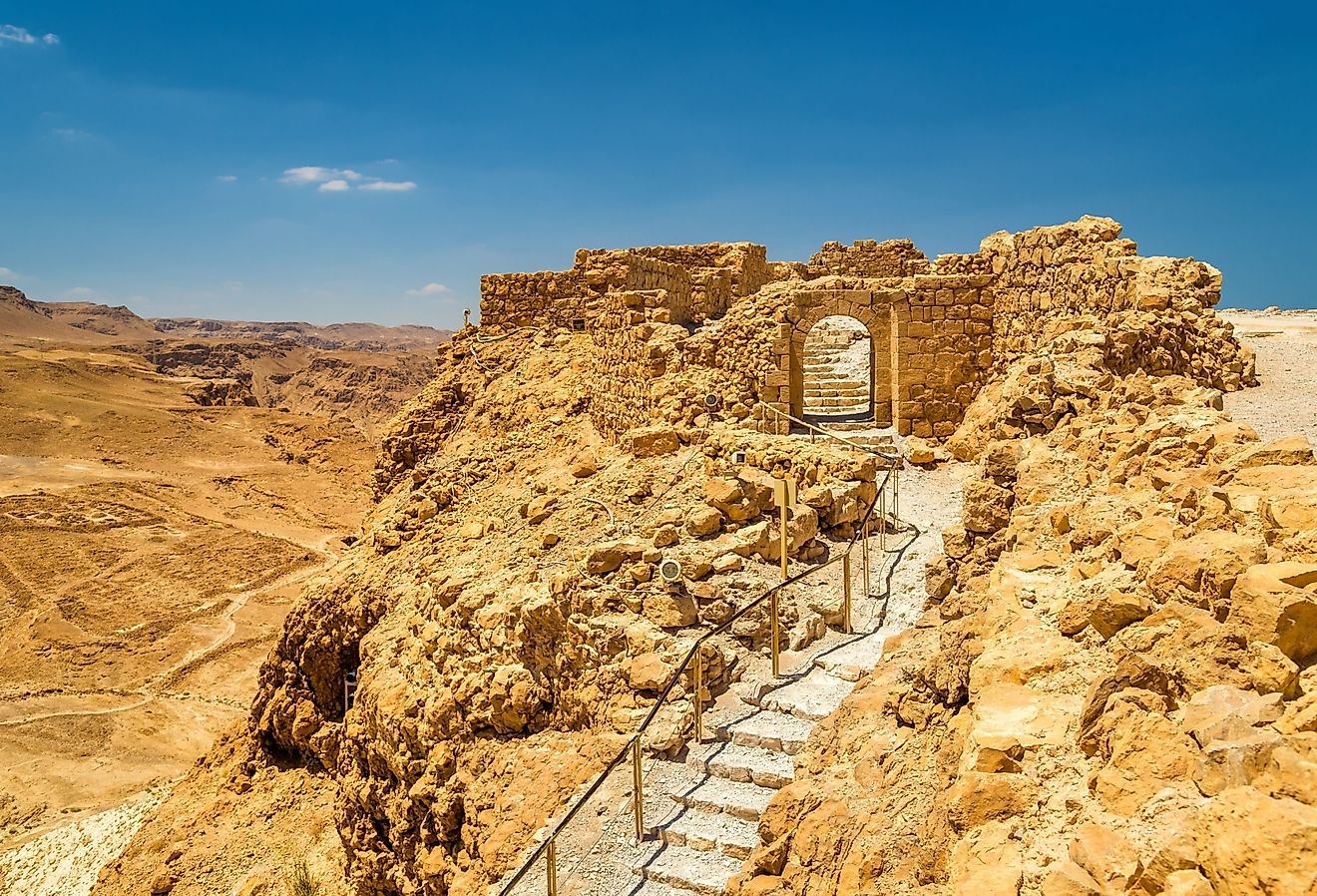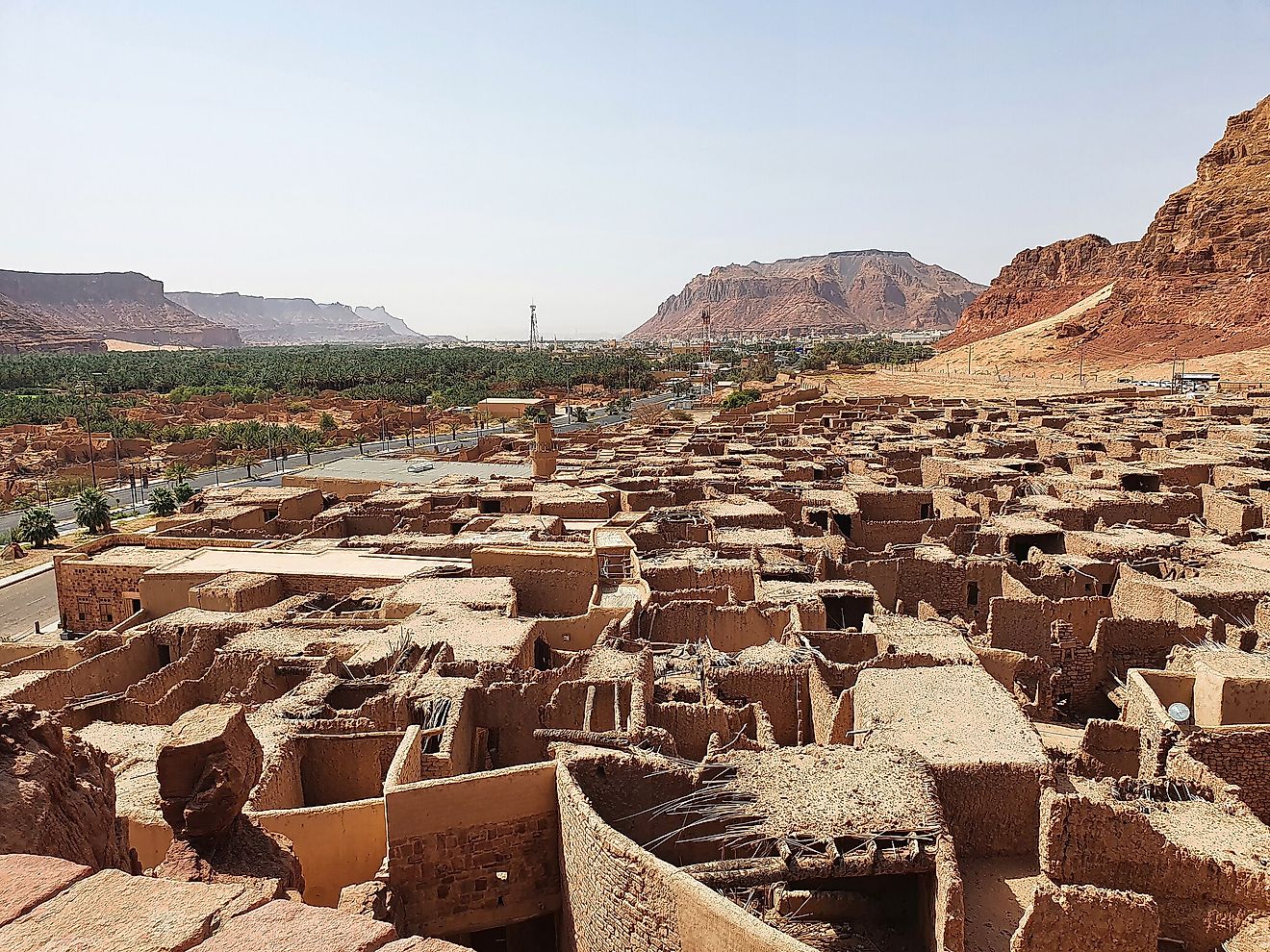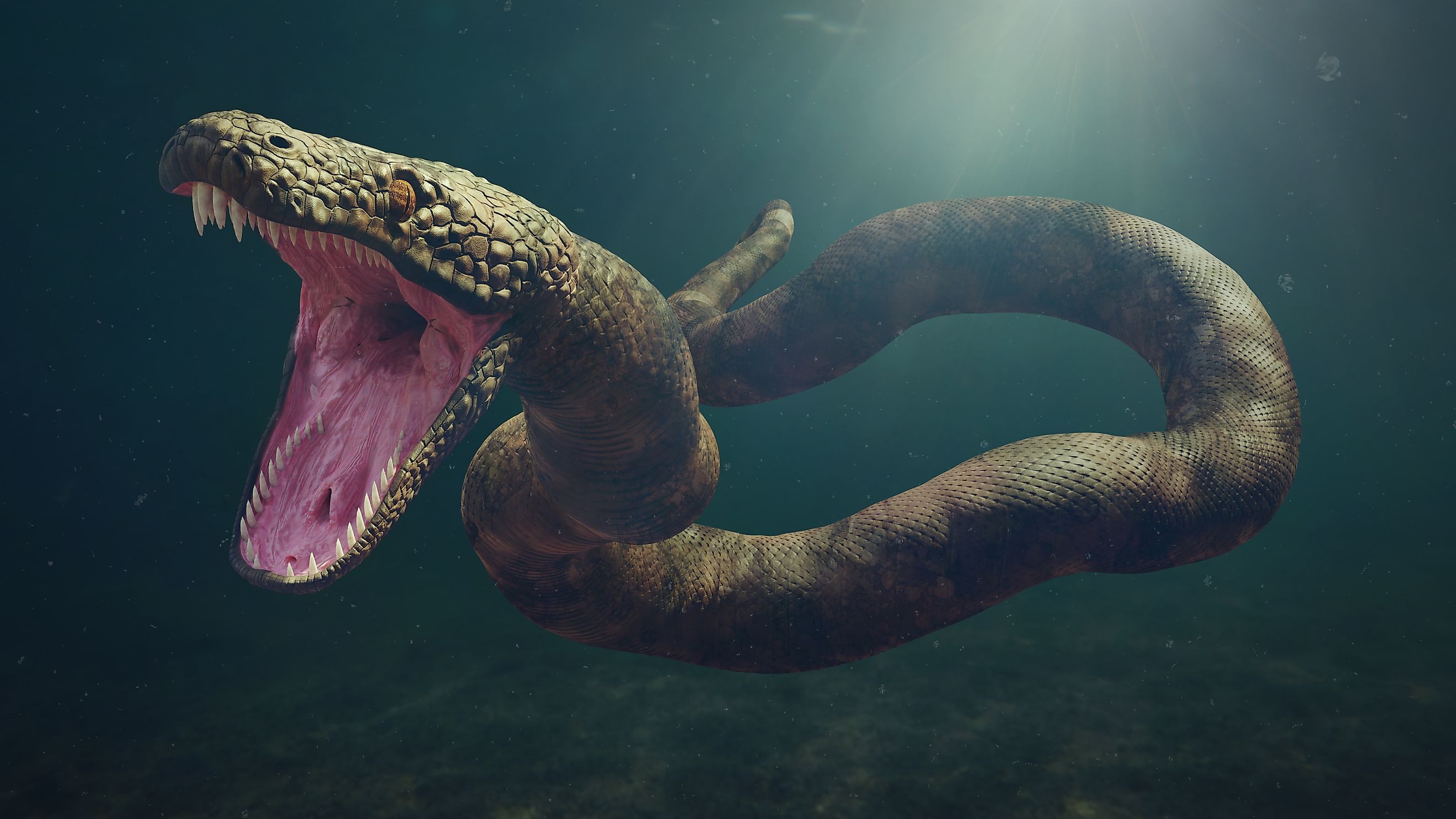
The Titanoboa Was The Largest Snake To Slither The Earth
Long as a school bus, wide as a baseball bat, and heavy as a truck, the Titanoboa (Titanoboa cerrejonensis) was the largest snake ever to slither the earth. This extinct member of the Boidae family (i.e., the same lineage as modern-day boa constrictors and anacondas) lived approximately 58-60 million years ago but was only unearthed at the beginning of the new millennium (and in a rather unexpected place). Let's journey back to when tropical rainforests first appeared on the planet and discover the staggering apex serpents they supported.
How Big Was The Titanoboa?
Based on 100 fossil remains from 28 specimens, combined with mathematical models and anatomical comparisons to the world's largest living snakes, researchers posit that the titanoboa was 40 to 50-feet-long (average of 45 feet), three-feet-wide, and weighed 2,500 pounds. To put that in perspective, the longest snake reliably recorded in the modern era was a 32.8-foot reticulated python, while the heaviest snake yet documented was a green anaconda that weighed 440 pounds. The titanoboa was not only the largest snake of all time but the biggest post-dinosaur predator until the arrival of the megalodon 23 million years ago.
Where And When Did Titanoboas Live?
All evidence of the titanoboa comes from the Cerrejón formation in northeastern Colombia. This open pit coal mine (one of the largest in the world) falls within the department of La Guajira, which is near Venezuela's northwestern border and about 60 miles from the Caribbean coast. Wide-scale extraction (i.e., tens of millions of tons each year) has left Cerrejón nothing more than a barren, gray, almost lunar-like landscape, but during the reign of titanoboas, the scene was vastly different.
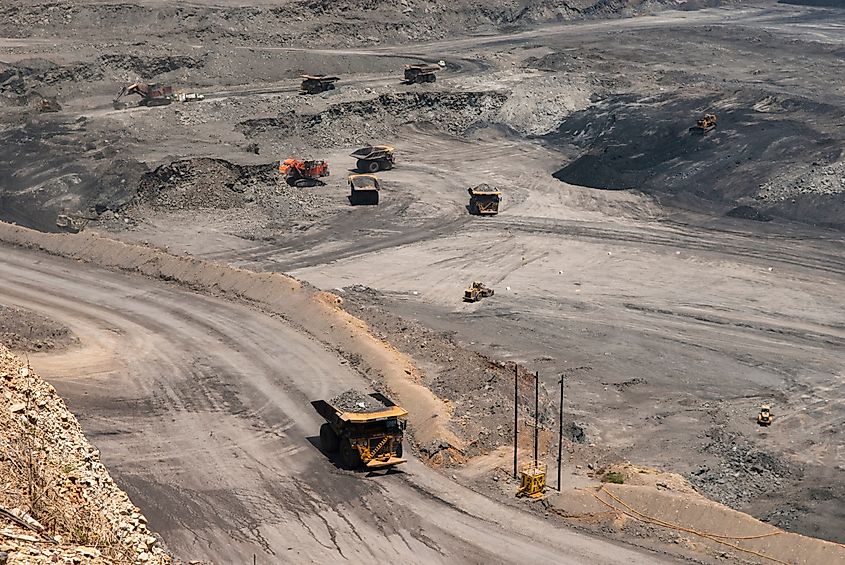
Prior to the late 1990s/early 2000s, very little was known about the 10 million years following the extinction of the dinosaurs (i.e. 65 million years ago). But thanks to the treasure trove of findings at Cerrejón, evidence of the world's first tropical rainforest and remains of the first known land vertebrates of that era have been unearthed. The discovery of titanoboa, it seems, was a one-two punch for science.
Between 60 and 58 million years ago, the largest snake to ever inhabit the earth enjoyed a hot, wet (i.e., nearly double the annual rainfall of today's Amazon) and swampy environment. This would have helped it to warm its cold-blooded body, and much like its modern-day cousin, the anaconda, it could have spent a large amount of time in the water - where its mass would have been less taxing to drag around. In this prehistoric rainforest (and in a world in which atmospheric carbon dioxide levels were as much as 50% higher than they are today), everything was bigger. Five-foot shells belonging to eight-foot turtles have been found at Cerrejón, as have 13-foot dyrosaurids (crocodile-like creatures) and seven-foot-long lungfish - all of which would have been easy prey for the Titanoboa.
One might be curious as to how an open pit mine that involves regular blasting, heavy machinery, and all kinds of wastewater could wind up becoming a hotbed for fossils. Well, though similar caches surely exist elsewhere in the South American rainforest, they are buried beneath tons of soil and dense vegetation. Getting at such remains would be a monumental challenge - and that's assuming you know where to look. The silver lining at Cerrejón is that new segments of the earth are constantly being revealed. And for the most part, the coal sits above the Paleocene fossil line. As such, giddy researchers just have to wait for the upheaval to occur and then scour the exposed sandstone and mudstone for anomalies.
Who Discovered The First Titanoboa Fossils?
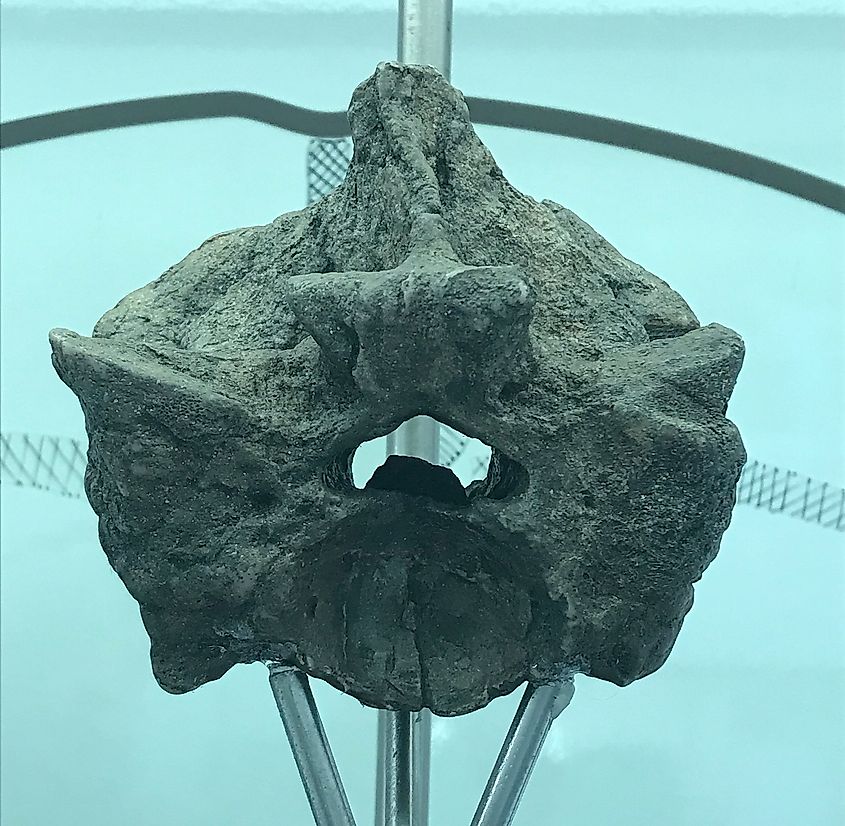
Uncovering and analyzing the first Titanoboa fragments was a team effort spanning two decades. The first domino fell in the 1990s when Colombian geologist Henry Garcia, who was employed by the Cerrejón mining operation, labeled a curious artifact as a "petrified branch." Nothing much happened for the next decade until Fabiany Herrera (an undergrad geology student at Colombia's Industrial University of Santander) found fossilized leaves imprinted in sandstone and showed them to local paleobotanist Carlos Jaramillo. Immediately, the promise of further enlightening findings became apparent, and a formal expedition was organized in 2003.
One of the invited specialists from the Smithsonian National Museum of Natural History, Scott Wing, recognized the "petrified branch" as a mislabelled artifact. He sent a picture of it to Dr. Jonathan Bloch of the University of Florida, who determined that it was the jawbone of a dirosaur. Intrigued, Bloch joined the field team the following year. Now, the hunt was on for not only the remnants of the oldest known tropical rainforest but also the megafauna that once lived in it.
In 2007, while analyzing "croc" fossils in the Florida Museum of Natural History at the University of Florida, grad student Alex Hastings once again spotted an incongruity. He showed a peculiar vertebrae to his peer, Jason Bourque, who correctly attributed it to a snake. The two then presented their finding to Bloch, who promptly put it side-by-side with another vertebrae they had in the museum that belonged to a 17-foot anaconda (quite a large specimen by today's standards). Amazingly, the backbone from Cerrejón dwarfed that of the anaconda.
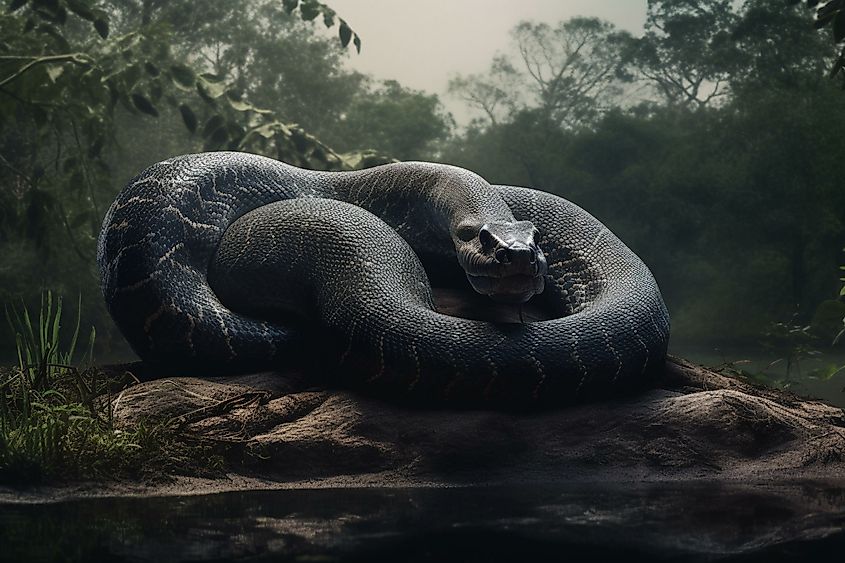
Jonathan Bloch then jumped on a video call with paleontologist, Jason Head, at the University of Nebraska. When he raised the fossil up to the camera, Head proclaimed that it belonged to the largest snake known to science. He then booked the next flight down to Florida.
As a result of subsequent expeditions to Cerrejón, 100+ vertebrae, ribs, and other fragments were discovered belonging to 28 distinct snakes. While all of this was helpful data, in the absence of a complete spinal column, it was still difficult to ascertain just how massive the titanoboa was. Thankfully, the linchpin came in 2010 when a partial skull was found by an intern for the Smithsonian Tropical Research Institute by the name of Catalina Suarez Gomez. Because the bones in snakes' skulls are quite delicate, they almost never fossilize. Gomez's contribution, therefore, allowed for the development of a life-sized model, which premiered at the National Museum of Natural History in Washington, D.C., alongside the Smithsonian Channel's documentary entitled Titanoboa: Monster Snake, on March 28th, 2012.
A Snake Longer Than The Titanoboa?
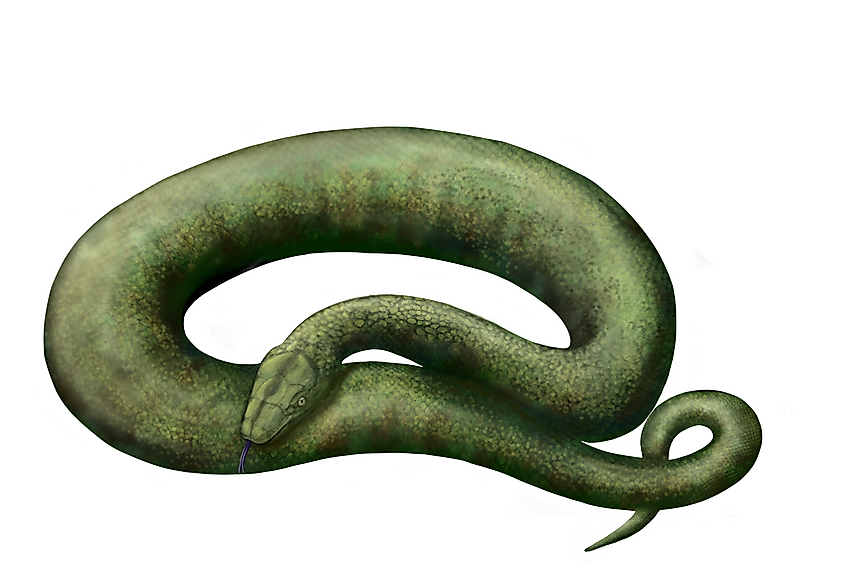
Since the remarkable discoveries were made at Cerrejón, the Titanoboa has been the uncontested king of snakes, past and present. But in April of 2024, paleontologists Sunil Bajpai and Debajit Datta unearthed a fossilized serpent that parallels Titanoboa in both length and circumstances. Once again, a mine, this time in western India, helped reveal the ancient being in the form of an unusually large backbone. Based on a partial spinal column containing 27 vertebrae, Vasuki indicus (a name given in honor of the mythical serpent that Shiva, a Hindu deity, holds around his neck) was estimated to be 36 to 50 feet long. Unlike titanoboa, whose predecessors persist (and still in impressive fashion), Vasuki indicus belonged to a now-extinct family of terrestrial snakes known as Madtsoiidae. The rocks surrounding these remains were dated to 47 million years ago, but Madtsoiidae is thought to have lived for about 100 million years (from the Late Cretaceous to Lake Pleistocene) in what is now the Indian subcontinent, South America, Africa, Madagascar, Australia, and the European archipelago.
Final Thoughts
Whether it's paleontologists digging up colossal bones, or biologists filming behemoth anacondas in the Amazon, we continue to learn more about the largest snakes on earth. The last few years, in particular, have proven to be quite fruitful, so who knows what record-breaking mythological serpent will be found next? It might come to us from the distant past, or it might still be lurking somewhere deep in the jungle.



